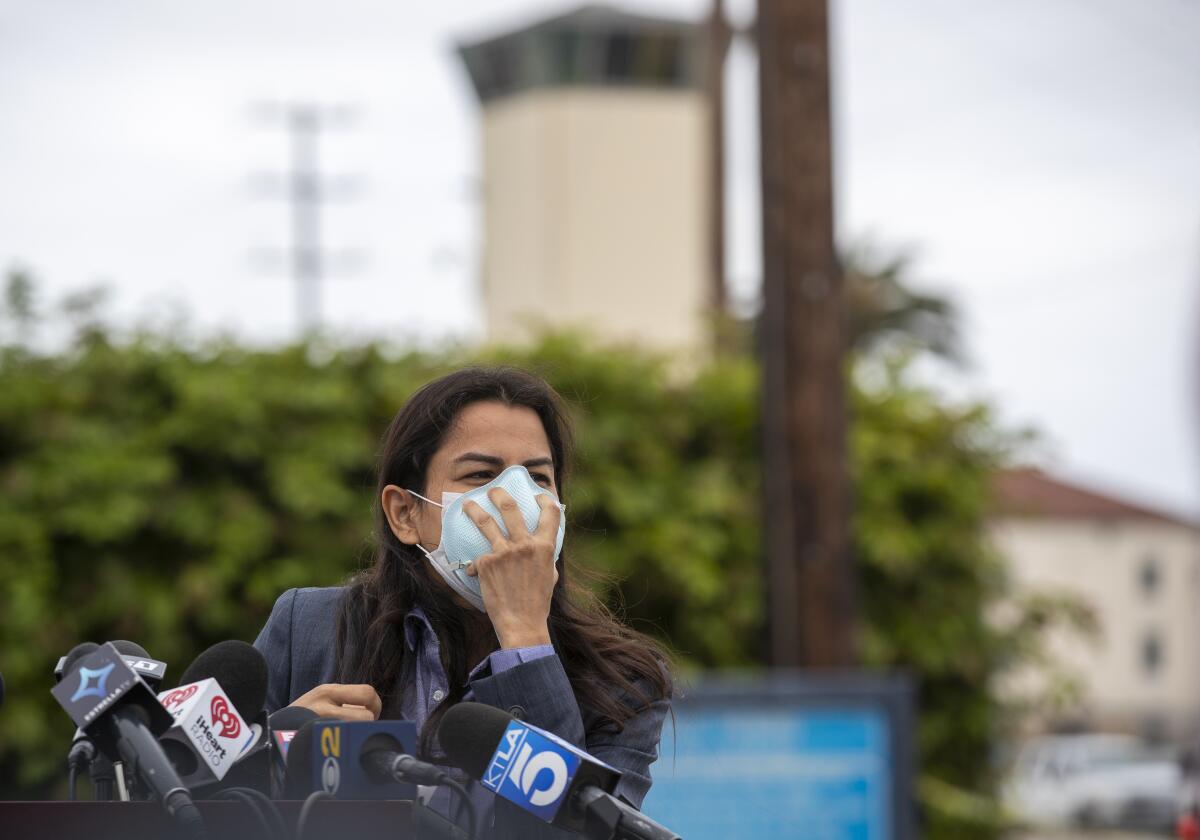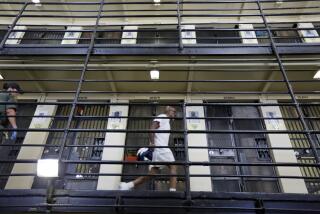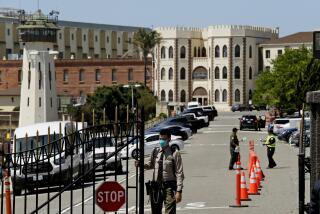After seventh coronavirus death at Terminal Island, congresswoman says inmates lack protection

- Share via
Days after a seventh inmate at the Terminal Island federal prison died from a coronavirus-related illness, a U.S. congresswoman emerged from the San Pedro lockup Tuesday saying she was disturbed by what she saw inside and that detainees were desperate for protective equipment.
After touring the facility, Rep. Nanette Diaz Barragán peeled off the suction-cup mask, gown and protective visor she’d worn while stepping into isolation areas at the site of one of the nation’s most intense outbreaks of the coronavirus and described inmates as screaming for help. Many in the units for highly infectious inmates were supplied with just cloth masks.
“While I was there, I would hear the inmates screaming that were in isolation units,” Barragán said. “Saying, ‘Turn on the air, get us some air.’ ‘Help me, I need to make a call.’”
The low-security dockside prison houses just over a thousand medically vulnerable inmates, and more than 700 have tested positive for coronavirus infection. Only the federal prison in Lompoc has documented more virus-infected inmates.
“I am very concerned about what I saw in there,” she said. “There is no physical distancing happening. ... What we are being asked to do isn’t happening in there.”
Over the weekend, a 70-year-old man who was serving a 26-month sentence for tax fraud died from COVID-19-related conditions. Scott Douglas Cutting Sr., who had preexisting medical conditions, was placed on a ventilator April 15 at a nearby hospital and died Saturday.
“You get a three-year sentence for a tax charge,” Barragán said. “It shouldn’t be a death sentence.”
Every inmate in the facility has been tested for COVID-19, and the L.A. County Department of Public Health and federal officials released new statistics Tuesday showing 552 inmates had recovered after testing positive.
The Bureau of Prisons in recent weeks has expanded housing into a manufacturing facility at the prison, putting up military tents to distance inmates from one another. But Barragán described how some inmates who initially tested negative had since tested positive and were living in the same housing as those not infected.
Barragan said the masks inmates were using were flimsy, and she saw inmates congregating together. Given the level of infection, they should be given more protective N95 masks, she said.
Bureau of Prisons officials declined as a matter of policy to comment on discussions with Barragán.
But correctional union leaders at the prison said rigid masks such as the N95 contained metal that inmates could use to pick locks or make a weapon.
About 15 prison staff members have been infected as well as the wife and child of a correctional officer, a union official said.
“It is worrisome,” said John Kostelnik, western regional vice president of Council of Prison Locals 33. “It is prison; it is extremely difficult to social distance within a prison.”
Barragán said only six inmates had been released under a directive by U.S. Atty. Gen. William P. Barr to assign medically vulnerable low and minimum-risk inmates to home confinement, and those numbers should increase.
“We are not talking about violent murders,” she said. “We’re talking about people who have a tax case or drug charge.”
More to Read
Sign up for Essential California
The most important California stories and recommendations in your inbox every morning.
You may occasionally receive promotional content from the Los Angeles Times.











